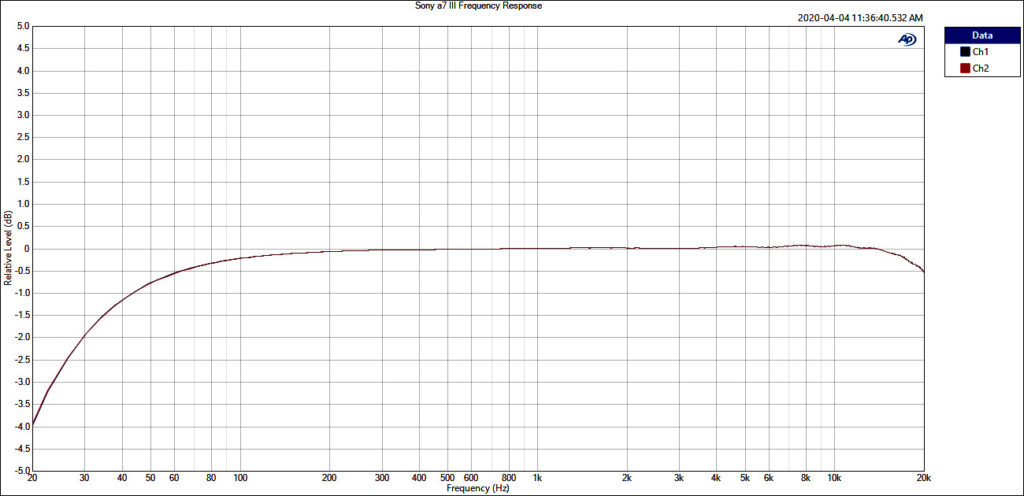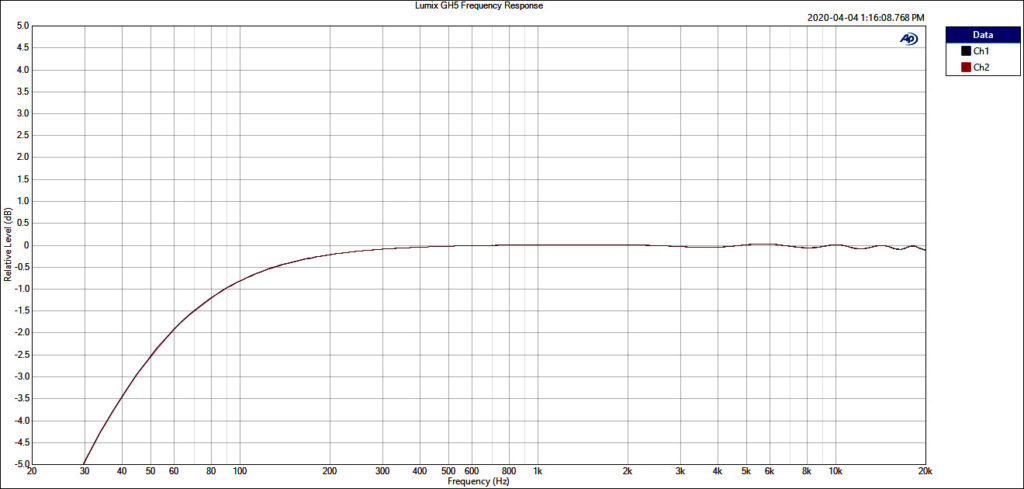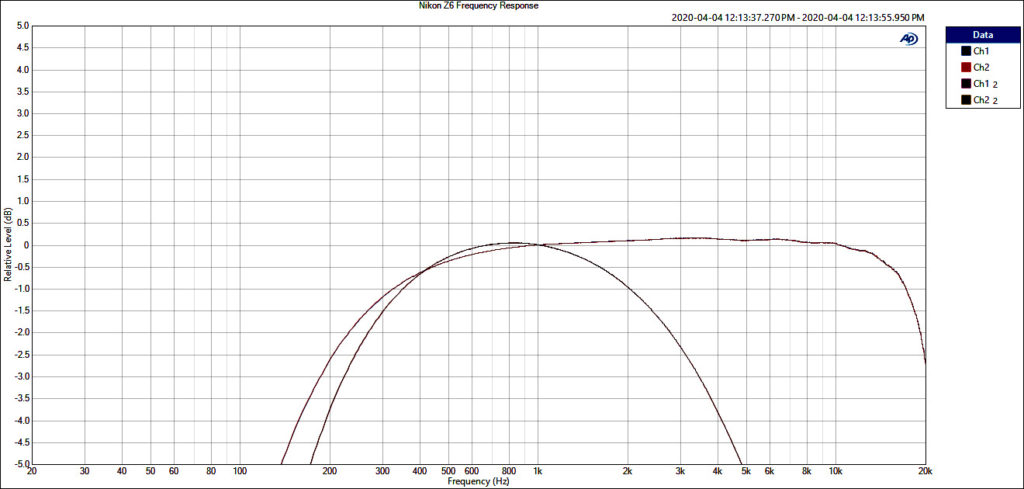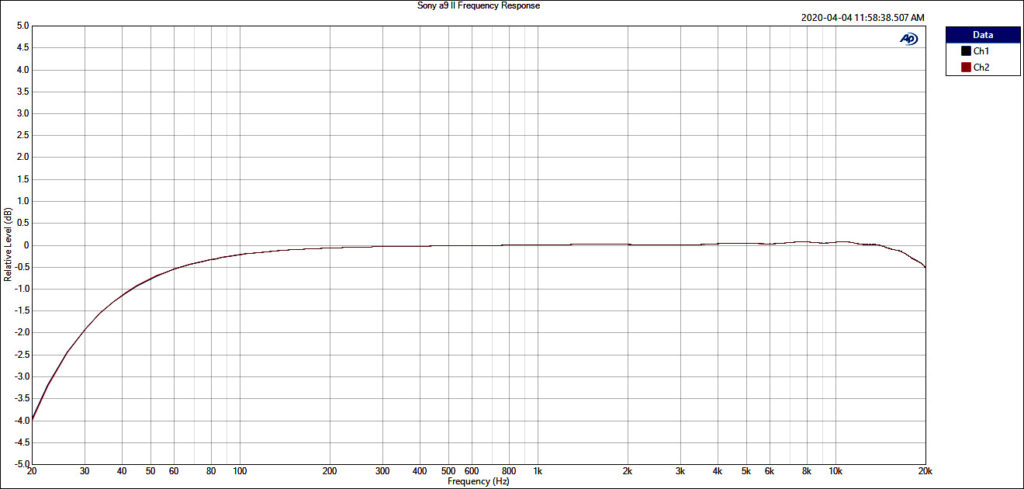
Sony a7 III
Sony Alpha Audio, bench tests the best in the business. A few weeks ago, there was a Video Blog about how the audio preamplifiers in DSLR or Mirrorless cameras performed. The test was done on six cameras: Canon 1D X III, Nikon Z6, Sony a7 III, Panasonic S1H, Fujifilm X-T3, and Olympus E-M1 III.
The outcome of this test showed the Sony a7III had by far the worst audio result of all cameras tested. There was a follow-up update on the study which used a second Sony a7 III camera, which had similar results, the Sony tested better but this re-test talked about the difference in microphone performance on the a7 III.
Right from the beginning, I had concerns with the cameras tested. The Canon 1D X III was launched in March 2020 with an MSRP of $6500.00 and compared with a two-year-old Sony a7 III launched Feb of 2018 and an MSRP of $2000.00.
I didn’t think it was a fair test of a camera’s preamp in the timeline of technology development or pricing. And the outcome I was getting from my Sony cameras did not match that of the review at all. The two tests made me suspect that something was wrong in the testing method.
While I am not an audio expert and don’t know how to do extensive scientific testing of cameras, I knew where to turn for help for all my audio questions and solutions.
I have long known Harry Kaufmann, who is the founder and president of Beachtek. Harry has an extensive electronics background and a keen interest in audio. He built his first audio adapter for his own use back in 1997 to add professional XLR microphones to his Sony VX3 camcorder. Beachtek has now been making audio adapters for over twenty years and has a full range of devices, from simple low-cost passive adapters to high-end cinema preamplifiers.

So, I asked Harry if he could test the Sony a7iii and other cameras to verify the results from the other tests.
Before we talk about our test results, I think it is essential to talk about the basics of audio capture to understand the results.
1) The human range of hearing is commonly known to be 20 Hz (low frequency) to 20 kHz (high frequency), although there is considerable variation between individuals. As we age, our hearing will degrade with a gradual loss of sensitivity to higher frequencies.
2) No matter what device or preamp you use to record audio, there is no substitute for placing a microphone as close as you can to the subject of your recording. Generally, this would be about 2 to 3 feet away for a shotgun type mic, but in some situations, it may need to be closer. Harry likes to say, “If you can’t reach out and touch the mic, it is too far away!”
3) Generally, XLR type cables are less noisy than the mini-jack cables because XLR cables are balanced which makes them inherently immune to noise, and this is especially true with long cable runs from the microphone to the audio recording device.
4) The preamps built into our Mirrorless or DSLR cameras vary widely in quality, making it challenging to capture great audio with a microphone connected directly to our camera.
5) When recording audio with our DSLR or Mirrorless cameras, we have to be very mindful of our audio recording levels. Different types of cameras have differing quality of preamps and input sensitivities for recording audio. The camera needs to be set to the proper gain to minimize any hiss produced by the camera preamps.

So I asked Harry to take all the subjective factors out of the equation and bench test five cameras of about the same generation and price range. They were the Sony a7 III (Released date Feb of 2018, MRSP $2000.00), Nikon Z6 (Released August of 2018, MRSP $2000.00, Canon EOSR (Released October 2018, MSRP $2100.00), and the Lumix GH5 (Released March 2017, MSRP $1999.00).
Harry tested the audio performance of the cameras using an Audio Precision APx515 Audio Analyzer to check the THD+N, signal-to-noise ratio, and frequency response.
Harry did three main tests:
1) THD+N (Total Harmonic Distortion plus Noise. Total Harmonic Distortion is the sum of all the harmonic distortion products in a measurement. THD+N adds noise to this figure)
2) Signal-to-Noise Ratio (A measure used in science and engineering that compares the level of a desired signal to the level of background noise)
3) Frequency Response (Measures if and how well a particular audio component reproduces all of these audible frequencies)

Harry was able to graph the outcome of the tests for each camera and reported the following:
“I must say the results surprised me!” said Harry.
“The Sony cameras came out on top. All three models had virtually identical results (I also included an a9ii and an a7R MKiv to see if there was a difference in the Sony camera line-up). They had very low noise levels, and what surprised me the most was how wide the frequency response was. Usually, these types of cameras are only suitable for recording voice as they have a rather narrow response curve. They would not do well for recording music as there is very little bass response. However, Sony’s were flat to almost 20Hz, so they would be ideal for recording even the highest quality orchestra music – with a good mic, of course”.
“The Lumix has a decent signal-to-noise ratio but had high distortion at nearly 1% for some reason. Perhaps it is a one-off problem with this particular camera. The frequency response was almost nearly as good as Sony’s”.
“The Canon and Nikon cameras had poorer signal-to-noise ratio at the fixed input level and had higher distortion levels. They also had a very poor frequency response. They would be fine for recording voice, but since they would capture little below 150Hz, they would be ill-suited for music or sound effects”.
“Also, note that all of these cameras will produce excessive hiss when plugging most regular mics directly into the mic jack on the camera. I did a listening test to confirm. The preamps all get noisy when pushed. That is why we always recommend using an external adapter with low-noise preamps to give you the best performance”.
“In summary, the Sony’s are the clear winners with their excellent low noise performance, low distortion, and incredibly wide frequency response. In fact, they are the best cameras I have ever tested”.
The cameras tested out with Sony on top, followed by the Lumix G5, the Canon EOS R, and the Nikon z6 with the poorest results.

So I asked Harry if Sony cameras have the best preamp of the cameras tested why would the results of the other people that tested the cameras have got it so wrong.
Harry said, “The input sensitivity on the Sony cameras is higher than the Canon and Nikon, which will provide a hotter signal at the same input level. This higher sensitivity would fool some people into thinking they have a higher noise floor, but this is completely not true. I believe this is what happened to the reviewer in the video you sent me. That is why it is important to do a scientific test with hard data to get the true facts.”
To put this into terms that a photographer can understand, it would mean that Sony cameras have a rather high ISO (input sensitivity) than the other cameras tested. And rather than seeing noise in a photo, we can hear hissing when the camera is set up incorrectly. So like lowering ISO to get better image quality in photography, we would lower the input sensitivity in the audio settings to get better audio quality.
[supsystic-tables id=42]
It should be noted that all a companies brand DSLR or Mirrorless cameras that use a Mini Jack microphone port will most likely test the same as these results.
The big question
So, Harry how would I set up my Sony cameras to get the best sound quality?
“Turn down the Audio Recording level to 1 and get your microphone as close as you can to your subject. For voice recording, this may be 2 to 3 feet from your subject’s mouth.”
“If you can’t get your audio level in-camera to peak about -12db with your microphone, then you need to look into amplifying the audio signal coming into your camera by using an audio adapter (preamp) or a microphone that has a preamp built into it”.
I like to use a Beachtek DXA-MICRO PRO+ for this. The reason is I can not only amplify the audio signal into my camera but, I can connect XLR or Mini Jack microphones to it. Also, most importantly, I can use headphones to monitor my audio with Sony cameras that have no headphone jack.
To me, it is essential to try and monitor and hear what my camera is hearing while shooting video.
Frequency Response Test Charts




(Note: the Narrow Range is Voice Setting, the wider range is Wide Setting in Camera)


Conclusion
The internet was alive with comments after the Youtube release of the review and follow-up, which just lead to more confusion on my part. I wanted to get a scientific bench test of similar cameras to get to the bottom of what was happening with the cameras preamps after the Youtube reviews. I can’t thank Harry and the folks at Beachtek enough for their work in doing the testing and helping me understand the results.
Getting excellent audio performance from your camera is sometimes a difficult task. While it’s clear the Sony cameras capture the most extensive range and quality of audio, you have to have an understanding of your cameras preamp regardless of brand and set it to take full advantage of the sound captured. If your input signal is too low, then you will be near the noise floor of the preamps which will result in an excessive hiss. If the signal is too hot, it will cause clipping and distortion. Proper gain adjustment and a good input signal are the keys to getting the best audio performance from your camera.
Web References
The Original Preamp YouTube Story from DPTV
The Updated Preamp YouTube from DPTV
-30-
